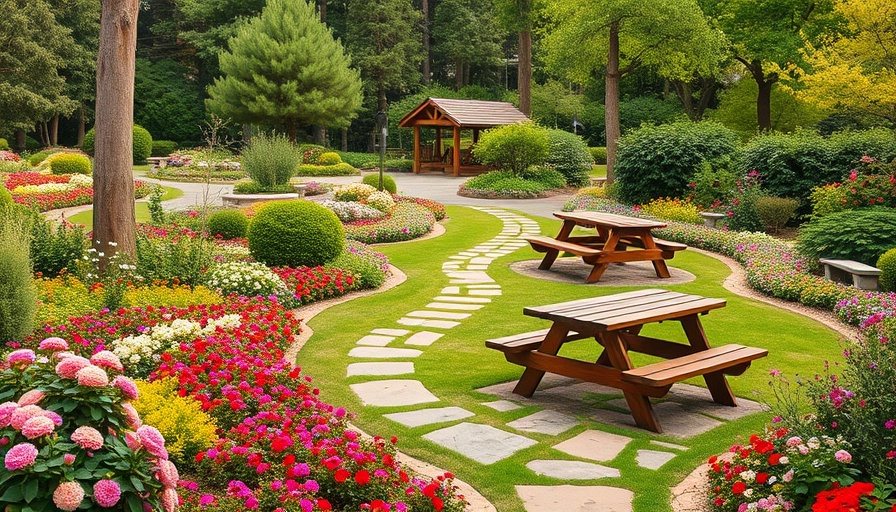
Embracing the Future of Gardening: What is Regenerative Gardening?
As environmental concerns rise and gardening enthusiasts search for sustainable practices, regenerative gardening is emerging as a beacon of hope. This approach not only benefits the planet but enhances your own yard as well. Simply put, regenerative gardening encourages us to improve our soil and local ecosystems.
According to landscape professionals, regenerative gardening is all about leaving the land better than we found it. Rather than relying on chemical fertilizers or pesticides that can harm the environment, regenerative gardeners implement organic practices that promote biodiversity. This includes planting cover crops that naturally enrich the soil and providing habitat for pollinators, thus fostering a healthy ecosystem.
Why California Homes Should Consider This Approach
For California homeowners, regenerative gardening presents an excellent opportunity to adapt to the state’s ongoing ecological challenges, such as drought and habitat loss. With its diverse climate and rich flora and fauna, California is ideally positioned for a regenerative gardening revolution. By adopting practices such as composting and planting native species, homeowners can reduce the consumption of water and chemicals while preserving local wildlife habitats.
The Connection to Biodiversity: A Vital Component
Importantly, regenerative gardening does more than just enrich the soil. It also serves as a direct means to enhance biodiversity. By creating spaces that support a diversity of plant species and provide shelters for local wildlife, gardeners contribute to the resilience of their local ecosystems. This is particularly beneficial in urban areas of California, which have seen significant habitat destruction. Landscape designer Melanie Hick emphasizes that regenerative efforts spend more time nurturing native biodiversity to create stable and vibrant landscapes.
Practical Changes to Implement in Your Home Garden
Thinking about going green? Here are some actionable insights to start your regenerative journey:
- Reduce Chemical Use: Opt for organic fertilizers and natural pest control methods.
- Use Cover Crops: Plant legumes and other quick-growing plants to restore soil health.
- Create Habitats: Incorporate birdhouses, bee hotels, and vegetable patches designed to attract beneficial insects.
These simple additions can turn a conventional garden into a thriving, regenerative ecosystem.
Common Misconceptions Addressed
Many homeowners may believe that regenerative gardening requires extensive knowledge and effort. However, the key is starting small. It’s about making gradual changes and focusing on natural processes. The idea isn’t to overhaul your entire garden instantly but to integrate small, eco-friendly practices over time.
Engaging with Nature: The Emotional Benefits
One of the most profound layers of regenerative gardening is the emotional connection it fosters between people and their environment. There’s a sense of satisfaction derived from nurturing the land and witnessing firsthand the natural cycles of growth and decay. As gardens flourish, so too do the spirits of those who tend them. This practice can transform not just how the land feels, but how we feel within it.
Take Action for a Greener Future
As we discover more about our responsibility to the environment, embracing regenerative gardening serves both personal and planetary well-being. California homeowners have a unique opportunity to integrate this practice into their yards—improving their immediate surroundings while contributing to environmental sustainability. Every small effort counts, so let’s start the regenerative journey today and give back to the earth we cherish.
 Add Row
Add Row  Add
Add 




Write A Comment